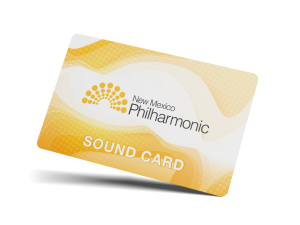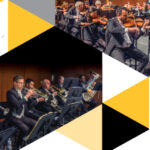Aaron Copland
Born 1900, Brooklyn, New York Died 1990, Tarrytown, New York
Four Dance Episodes from Rodeo (1942)
Aaron Copland was by all accounts a trailblazer, much like the American spirit his music emulates. He was the first American student of the famed French composer and teacher, Nadia Boulanger. Upon finishing his studies abroad, Copland wished to break free from European musical traditions and create a uniquely “American” style of classical music. Copland made several attempts to this end, writing in disparate styles before finding the quintessential Copland sound. Initially his works were influenced by American jazz and the neo-classical works of Stravinsky. He then veered somewhat off-course, writing works that were harsh and atonal which risked alienating his audience. In the 1930’s Copland wrote of this dilemma: “I began to feel an increasing dissatisfaction with the relations of the music-loving public and the living composer. The old ‘special’ public of the modern-music concerts had fallen away, and the conventional concert public continued apathetic or indifferent to anything but the established classics.” These words are eerily prescient, some eighty years later mirroring the plight of the modern day 21st-century composer. He continues, “It seemed to me that we composers were in danger of working in a vacuum … I felt it was worth the effort to see if I couldn’t say what I had to say in the simplest possible terms.
As I see it, music that is born complex is not inherently better or worse than music that is born simple.” Thus was born Copland’s most famous style that centers on Americana, folk tunes and populism.
Rodeo is Copland’s second foray into the “cowboy” ballet, the first being Billy the Kid (1938). Copland had to be convinced to write for Rodeo as he was not sure he wanted to immediately delve into writing another ballet with similar subject matter. Agnes de Mille had been chosen to choreograph the work, and she was able to convince Copland to write the music for Rodeo. She assured him that this work would be different, a simple, relatable love story against the backdrop of American ranch life. She described it as “Taming of the Shrew with cowboys.”
Rodeo is subtitled, “The Courting at Burnt Ranch” and consists of five segments: “Buckaroo Holiday,” “Ranch House Party,” “Corral Nocturne,” “Saturday Night Waltz” and “Hoe- Down.” In 1943 when Copland created the concert suite Four Dance Episodes from Rodeo, he omitted “Ranch House Party” leaving the rest of the movements mostly in their entirety. The ballet premiered at the Metropolitan opera House on october 16, 1942 with de Mille in the lead role. The premiere received 22 curtain calls and was an immediate success. The premiere of the concert suite took place in 1943 with the Boston Pops.
The story of Rodeo centers around a cowgirl who was raised at Burnt Ranch, and who strives to step out of her “just one of the guys” persona. She seeks the attention of the Head Wrangler, who is, like the rest of the cowboys, infatuated with the Rancher’s Daughter. Eventually she catches the eye of the Champion Roper who has just lost the Rancher’s Daughter to the Head Wrangler. In a tale as old as time, the Cowgirl puts on a beautiful dress for the Hoe-Down and finally attracts the attention of the Head Wrangler. The ballet culminates with the Cowgirl and Head Wrangler locked in a Hollywood kiss in the middle of the dance.
Rodeo is filled with American folk tunes, remarkably often left completely intact. “Buckaroo Holiday” opens with a rhythmic and spry fanfare filled with syncopation and accents. Copland uses the brass and strings as opposing forces in this opening. This is interrupted by the gentle and lyrical Cowgirl’s theme introduced by the woodwinds. The first folk tune to make an appearance is the railroad tune “Sis Joe” to which the cowboys enter. It is filled with evocations of galloping horses in the percussion and brass. “If He’d Be a Buckaroo” is used as the Cowgirl tries to garner some attention from her male counterparts. The fanfare, Cowgirl’s theme, “Sis Joe” and “If He’d Be a Buckaroo” all return in various forms clamoring for attention through the boisterous end of the movement.
The “Corral Nocturne” is an ode to unrequited love and forlornness. The Cowgirl’s sadness is conveyed through the use of melancholy solo winds to illustrate her plight. When Agnes de Mille described this scene she stated, “She run[s] through the empty corrals intoxicated with space, her feet thudding in the stillness.”
“Saturday Night Waltz” begins with the cowboys and town girls pairing off to dance. Sadly, the Cowgirl is left standing alone until the Champion Roper approachers her (still smarting from that whole Rancher’s Daughter incident). They dance to the tune of “I Ride an old Paint.” The opening bars conjure the sounds of fiddlers tuning before the main theme is introduced by the oboe. The movement presents the theme in a decidedly innocent manner, depicting the genteelness of the budding courtships on the dance floor.
“Hoe-Down” is of course the most recognizable of the four movements. It contains large sections of two folk songs, “Bonaparte’s Retreat” which is heard from the outset, as well as “McLeod’s Reel.” The traditional Irish tune, “Gilderoy” is also briefly quoted. The Rodeo theme returns toward the end of the movement, slowing down dramatically and finally ending with a major chord featuring a high ethereal string sound—signifying the much- anticipated first kiss between the Cowgirl and the Head Wrangler.
Rodeo, with its overtly American subject matter and masterful use of folk tunes, is a prime example of Copland’s ability to develop his goal of an “American” school of classical music. He was interested in the nationalist music movements of several of his contemporaries, most notably Carlos Chávez. In 1928 he wrote of Chávez, “His music is not a substitute for living but a manifestation of life. It exemplifies the complete overthrow of nineteenth-century Germanic ideals which tyrannized over music for more than a hundred years. It propounds no problems, no metaphysics. He is one of the few American musicians about whom we can say that he is more than a reflection of Europe.” This was written before he had developed the style we now recognize as Copland, but his desire to break free of European musical traditions is evident. In less than ten years, he had achieved his paradigm.



